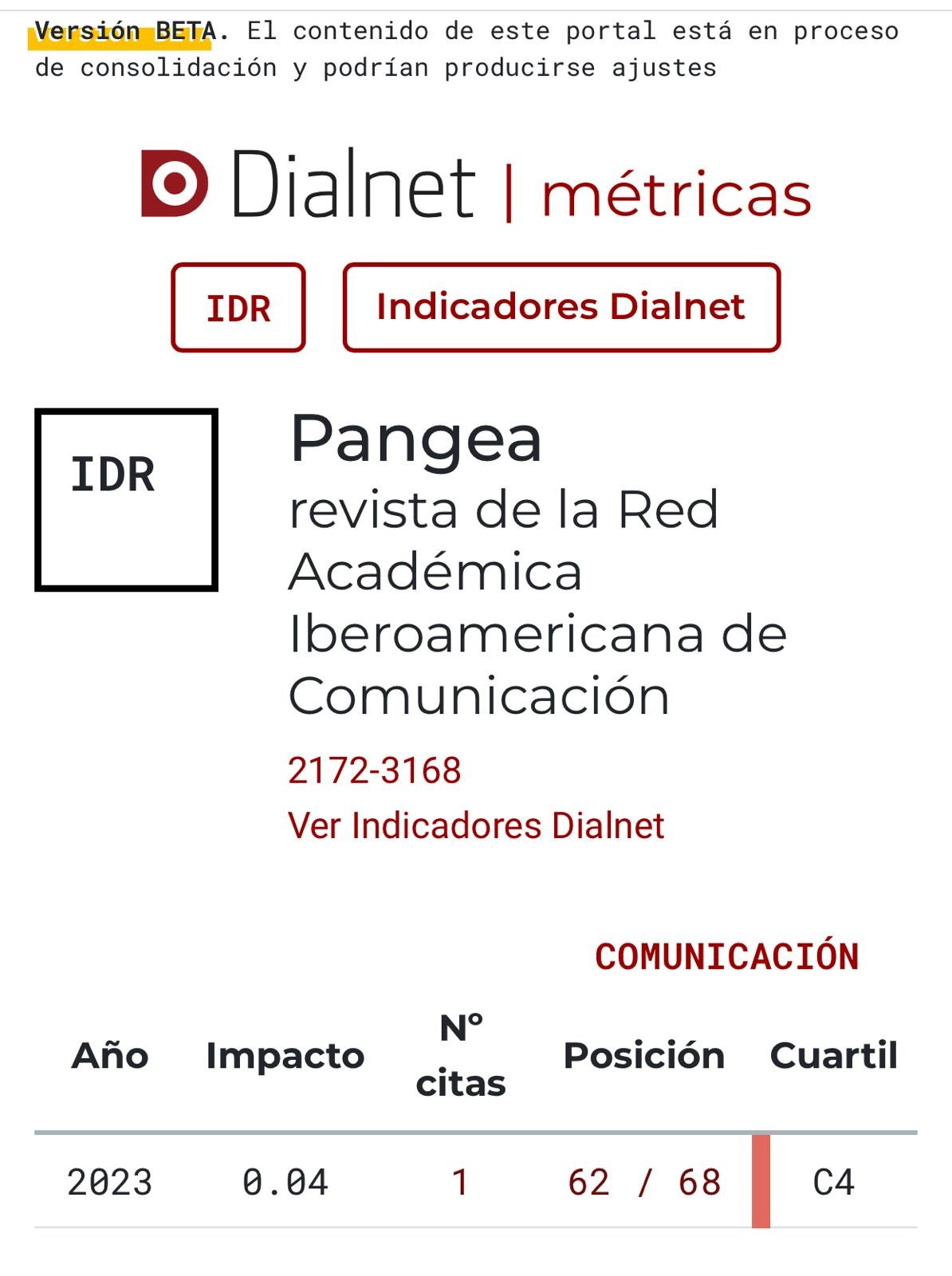Advertised vices: the attraction of the forbidden and the effectiveness of advertising censorship
DOI:
https://doi.org/10.52203/pangea.v14i1.177Keywords:
Tobacco, Social networks, Leaders of opinion, Adolescence, Prohibition, AdvertisingAbstract
The article presents a study on the way in which exposure to addictive products (particularly tobacco) in social networks destroys the advances in reducing consumption by young people, achieved after the prohibition of tobacco advertising carried out by carried out in 2005 by the WHO. The research will seek to understand if the effectiveness of advertising censorship (applied in 2005 towards tobacco companies) is compromised, after the use of social networks; to establish a closer link with current and potential consumers.
References
Abrams, Z. (2022). Largest ever study of tobacco content on social media links exposure to tobacco use.
Allem, J. P. (2022). Association Between Exposure to Tobacco Content on Social Media and Tobacco Use: A Systematic Review and Meta-analysis.
American Society of Addiction Medicine. (2011). Public Policy Statement. Definition of Addiction.
Bano, S. (2019). The Impact of Social Media on Learning Behavior for Sustainable Education.
Cawley, J. (2008). The Economics Of Health Behaviours (International Library of Critical Writings in Economics).
Chatterjee, S. (2020).Why do small and medium enterprises use social media marketing and what is the impact.
Connolly, B. (2020). Digital Trust: Social Media Strategies to Increase Trust and Engage Customers.
Hornik, R. (2019). The Relationship Between Exogenous Exposure to “The Real Cost” Anti- Smoking Campaign and Campaign-Targeted Beliefs.
Lee, K. & Chen, Y. (2021). Using social media images as data in social science research. Chotpitayasunondh V. & Douglas M. (2018). The effects of "phubbing" on social interaction en Hens G. (2019). Nicotine: A Love Story Up in Smoke.
Mcdonald, J. (2015). Pinterest Marketing Workbook.
Merton, R. & Lazarsfeld, P. (1948) Collaboration on Communication. Jones N. (2020). From Social Media to Social Ministry.
Milov, S. (2019). The Cigarette: A Political History.
Oxford. (2020). Nicotine and Tabaco Investigation.
Serrano Santoya, A. & Martínez, E. (2003). La brecha digital: mitos y realidades Godin S. (2018). This Is Marketing: You Can't Be Seen Until You Learn to See.
Substance Abuse and Mental Health Services Administration. (2016). Results from the 2016 National Survey on Drug Use and Health.
Swar, B. & Hameed, T. (2017). Fear of Missing out, Social Media Engagement, Smartphone Addiction and Distraction: Moderating Role of Self-Help Mobile Apps-based Interventions in the Youth.
Tateno, M. (2019). Internet Addiction, Smartphone Addiction, and Hikikomori Trait in Japanese YoungmAdult: Social Isolation and Social Network.
Twenge, J. M. & Campbell, W.K. (2019). Media Use Is Linked to Lower Psychological Well- Being: Evidence from Three Datasets.
Wasserman, S. & Faus, S. (2013). Análisis de redes sociales. Métodos y aplicaciones.
WHO. (2017). Report on the global tobacco epidemic: Monitoring tobacco use and prevention policies.
Downloads
Published
Issue
Section
License
Copyright (c) 2023 Matias Pampaloni

This work is licensed under a Creative Commons Attribution-NonCommercial-NoDerivatives 4.0 International License.
https://creativecommons.org/licenses/by-nc-nd/4.0/deed.es





